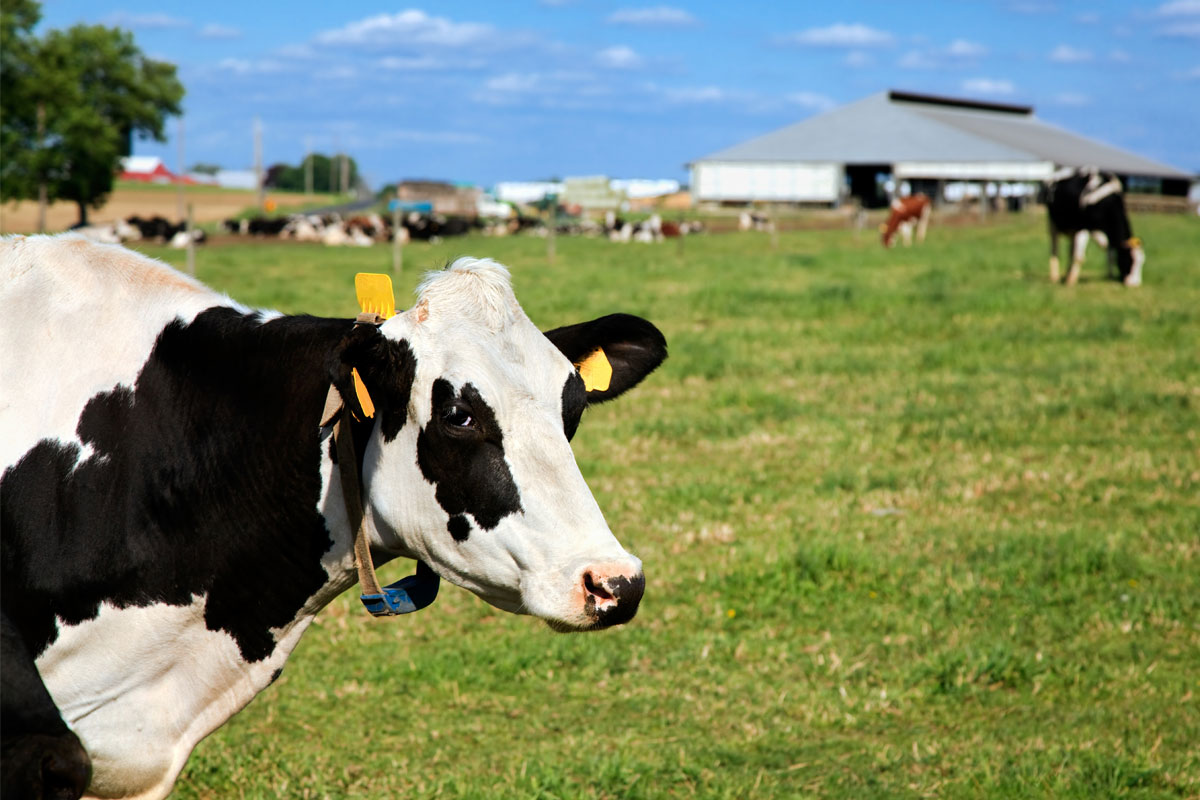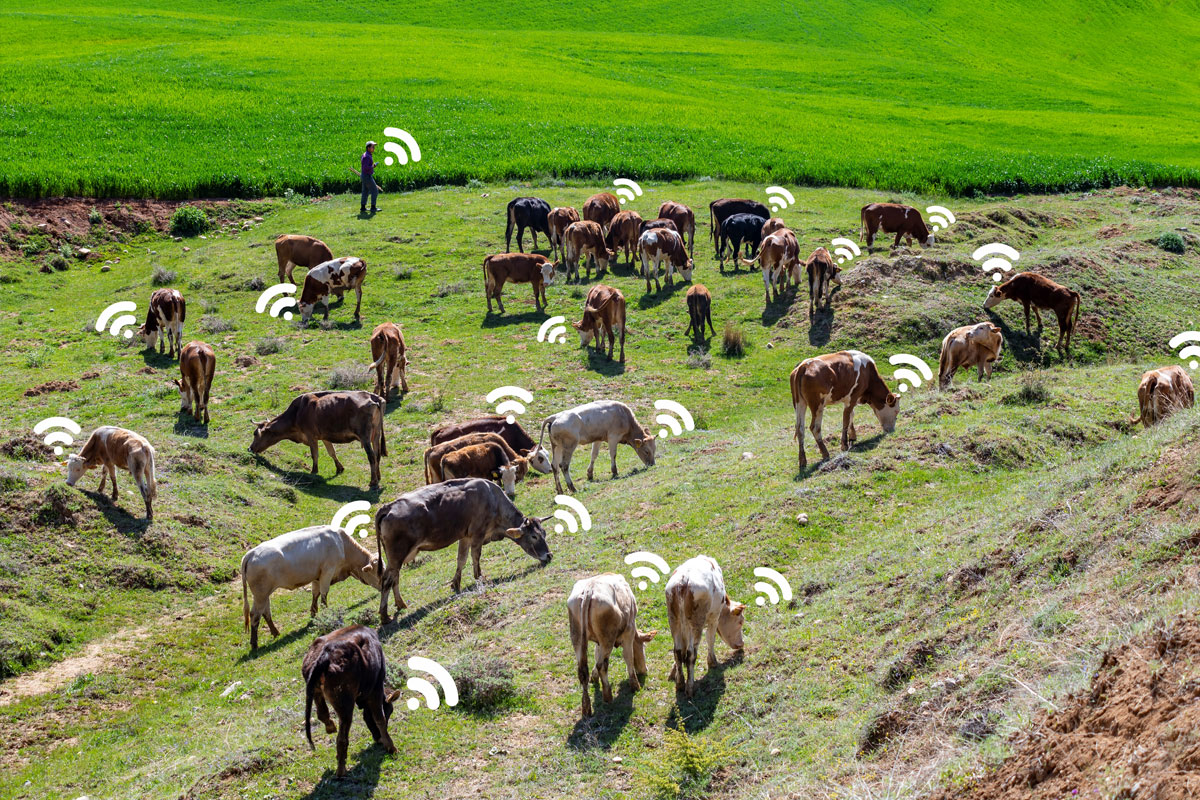
The Internet of Things (IoT) has revolutionized indoor smart farming, centuries-old agriculture practices, animal husbandry, and much more. Thanks to data-driven automation and interconnected devices, IoT-enabled systems for agriculture are expected to become an $84.5 billion global market by 2031. They are poised to shake up the world’s food supply.
Virtual fencing has also come on the scene to replace traditional fencing in cattle ranching because It is more environmentally friendly. Digitized virtual fences and accompanying apps offer farmers unprecedented insights from machine learning and artificial intelligence (AI) that will assist with conservation efforts.
The History of Virtual Fences
While it seems new, virtual fences have been an inevitable outcome since the earliest uses of free-range farm animals. As pioneers expanded into the Midwest in the 1870s, it became increasingly difficult to enclose vast plots of land with physical fencing. When barbed wire fencing was introduced, it forever changed the ecology of the great plains. Fast forward to the 1970s, as pet containment systems became popular and virtual fences first appeared with electronic collars for dogs. An electric wire was put underground, and as the dog approached the underground fence, an electric shock or jolt would deter them from crossing the invisible boundary.
Virtual Fences in Farming

Livestock virtual fences were first introduced in the late 1980s but weren’t accessible to most ranchers. Similar to electric collars for dogs, digital fences create invisible boundaries around pastures and will supply an electric jolt if cows cross. The earliest iterations were incredibly expensive and difficult to implement, but this technology is becoming increasingly popular as artificial intelligence becomes more of an accessible everyday reality. Now, AI-powered virtual fences are more affordable, and as farmers and ranchers implement other technologies on their farms, virtual fences are a natural next step.
But how exactly do cattle learn to respond to virtual fences? First, cattle can be trained to respond to consistent, repetitive sound cues. Cows undergo a 4-day training when their collars get a warning beep followed by a shock. They learn to associate the collar’s sound cue with a desired action, like staying within a specific pasture area or avoiding a creek. Eventually, the herd will respond to the sound prompts of virtual fencing systems.
Benefits of Virtual Fences for Agriculture
For advanced cattle management, virtual fences create boundaries for livestock without physical barriers. Using advanced sensors and GPS tracking, AI also analyzes cattle movement and behavior patterns, giving ranchers more insights into their animals. Ranchers can monitor grazing areas and ensure efficient land utilization while keeping cattle on their land.
Take a look at more benefits of virtual fences in cattle management:
Improved Healthcare
Ranchers can use apps to receive real-time, up-to-date information about the well-being of their animals from the sensors embedded into the devices worn by the livestock. Not only does it monitor their location, but it can detect abnormalities in behavior and activity. Cattle can receive more proactive care if they’re sick or injured. Health issues can also be quickly spotted; missing an estrous cycle or losing a calf during birth can cause ranchers hundreds of dollars, and real-time detection systems help prevent health issues before they even arise.
Reduced Labor and Equipment Costs
With virtual fencing, ranchers can reduce their labor costs by over 25%. Pasture rotation and calling cows in for milking can all be done digitally, saving farmers a significant amount of money annually. Plus, physical fences can cost as much as $15,000 per mile to build and maintain, while virtual fences only cost roughly $50 per dollar per year in rental and battery fees. Even adding on the cost of a base station, which runs around $12,500, virtual fences come with cost savings.
Improved Sustainability
Virtual fences not only keep cows in approved locations, but they help prevent overgrazing. Algorithms help monitor herd movement and allow farmers to restrict or expand into areas when the grass is overgrazed. Plus, wildfires can be avoided, limiting cattle’s interactions with sensitive habitats, which helps maintain the ecosystem’s delicate balance. Also, virtual fencing reduces the environmental impact of the production, maintenance, and disposal of materials, which reduces waste and the ecological footprint.

Pushing the Boundaries
The benefits of virtual fencing are boundless, and there are real-life, on-the-market tools and platforms for ranchers to start using today. Here are a few companies working to give ranchers access to virtual fences:
Vence
A San Diego-based company recently acquired by Merck & Co., Vence has deployed 40,000 cattle collars with a goal of distributing 75,000 by the end of the year. It uses AI to control cattle movement, manage grazing, and report on animal health. The virtual fences assist with optimal rotational, or strip grazing to maximize the land’s yield and help ranchers reduce labor costs by roughly 25%. There is no need for herders, dogs, or vehicles to physically relocate cattle, as the app allows you to move the herd with the swipe of your fingers.
Nofence
Another virtual fencing company, Nofence’s app offers real-time monitoring and notification of cattle. It’s the world’s first commercial virtual fencing solution for livestock with GPS collars and a sophisticated app for ranchers. The GPS collars are powered by solar energy, and virtual fences create exclusion zones, so cattle are always grazing on the healthiest land.
Shepherd
eShepherd is another solar-powered GPS neckband for cattle that allows ranchers to track their herds with 24/7 visibility. Ranchers can quickly detect sick or injured cattle to give them immediate care and use heat maps to identify the most productive pastures.
Conservation Northwest
With GPS collars and solar-powered towers, Washington’s first virtual fence is more wildfire friendly than physical fencing and allows for quick, easy cattle rotation. Plus, it lets other wildlife wander free, which creates a healthier ecosystem where not all animals are contained in areas that can become overpopulated.
How Ambiq Contributes
Without sustainable, optimal battery life, virtual fences and the technology that supports them would be impossible to maintain. Devices need to operate around the clock, distribute millions of data points, and support a vast geographical range. Ambiq’s patented Subthreshold Power Optimized Technology (SPOT®) platform reduces the total power consumption on endpoint devices, making virtual fences more accessible and affordable for the next generation of technology-powered ranches.


